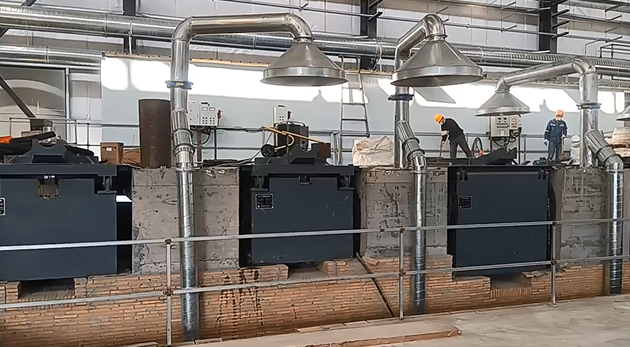What kind of refractory material is needed for the lining of an induction furnace?
Induction furnaces are widely used, and the design of large-scale industrial-frequency crucible induction furnaces often needs to take into account the refractory materials for the furnace lining.
In general, the lining materials of induction furnaces are mainly based on the utilization rate and economy of the furnace. In order to ensure the normal operation of the induction furnace, the refractory materials of the furnace lining generally have the following requirements:
1. Sufficient refractoriness
Materials with a refractoriness higher than 1580°C are called refractories. The operating temperature of the furnace lining is generally lower than the temperature of the molten metal.
However, based on the requirements for the life of the furnace lining, some areas of the furnace body have to be considered, and the temperature is too high. In cast iron induction furnaces, it is often unsafe to use materials with low refractoriness. As the lining material of cast iron induction furnace, its refractoriness should be greater than 1650-1700℃.
2. Good thermal stability
Induction furnaces rely on electromagnetic induction to exchange energy. In order to ensure high electrical efficiency of the furnace, the thickness of the furnace lining of the induction coil is limited.
In addition, the temperature of the furnace lining is always changing due to the influence of feeding, tapping or even stopping the furnace during the working process of the furnace, and the furnace lining is often cracked due to uneven heating, which reduces the service life of the furnace lining.
Therefore, as a refractory material for induction furnaces, it should have excellent thermal stability.
3. Good chemical stability
The chemical stability of the material is closely related to the life of the furnace lining.
At low temperature, the lining material shall not be hydrolyzed and decomposed. At high temperature, decomposition and reduction are not easy to occur. During the smelting process, the lining material is not easy to form a low melting point substance with the slag, and will not chemically react with the solution and additives.
4. The thermal expansion coefficient is small. With the change of temperature, the volume should be relatively stable, without violent expansion and contraction.
5. Has high mechanical properties. In the low temperature state, it should be able to withstand the impact of the charge; when the metal is in a high temperature melting state, it should be able to withstand the pressure of the molten metal and strong electromagnetic stirring; under the long-term scouring of the metal, it should be wear-resistant and corrosion-resistant.
6. Good insulation performance. The furnace lining must not conduct electricity at high temperature, otherwise it will cause leakage and short circuit, resulting in serious accidents.
7. The construction performance of the material is good. Easy to repair and good sintering performance, convenient for furnace construction and maintenance.
Induction furnaces have very strict requirements on refractory materials, which requires us to choose suitable refractory materials according to different use requirements, so that their performance can meet the requirements of induction furnaces.
This is today’s sharing on the selection of furnace lining materials, I hope it can be helpful to you.
Welcome to follow us Luoyang Hongteng, let us provide you with more services.
Video of the use process of the furnace


